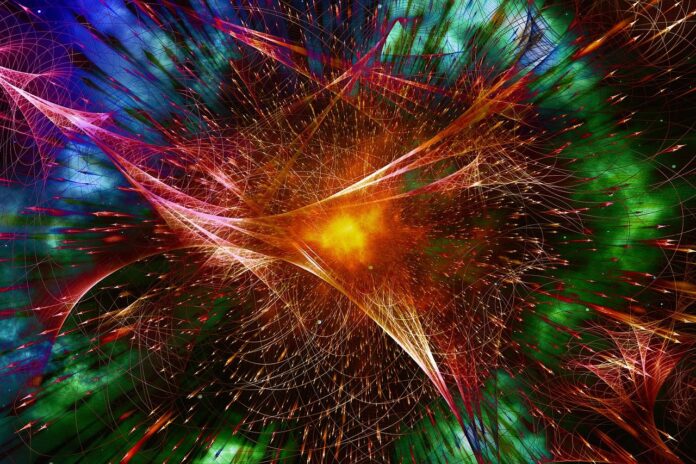Unveiling the Astonishing Power of Quantum Possibilities
In the captivating world of quantum mechanics, one of the most intriguing phenomena is quantum superposition. It is a concept that challenges our everyday intuitions about how objects behave and reveals the astonishing ability of particles to exist in multiple states simultaneously. In this article, we embark on a journey into the realm of quantum superposition, exploring its implications and unveiling the remarkable power it bestows upon the microscopic building blocks of our universe.
Embracing the Paradox: The Nature of Quantum Superposition
At the heart of quantum superposition lies a fundamental paradox. According to the principles of quantum mechanics, particles such as electrons, photons, and atoms can exist in a superposition of states, defying our classical notion of a single, definite state. This means that until measured or observed, a particle can simultaneously occupy multiple states, each with its own probability.
To grasp the concept, imagine a hypothetical scenario where a particle, such as an electron, can exist in a superposition of spin-up and spin-down states. In classical terms, we would expect the electron to have a definite spin orientation, either up or down. However, in the quantum world, the electron can be in a state where it is both spin-up and spin-down simultaneously, with each state existing with a specific probability.
The Power of Quantum Computing
Quantum superposition lies at the heart of one of the most promising applications of quantum mechanics: quantum computing. Classical computers use bits, which can represent either a 0 or a 1. In contrast, quantum computers harness the power of quantum bits, or qubits, which can exist in a superposition of 0 and 1 simultaneously.
This unique characteristic of qubits allows quantum computers to perform parallel computations and tackle complex problems with extraordinary efficiency. By exploring multiple paths simultaneously, quantum algorithms can provide exponential speedup compared to classical algorithms for certain computational tasks, such as factorizing large numbers or simulating complex quantum systems.
Schrödinger’s Cat: A Thought Experiment
One of the most famous illustrations of quantum superposition is the thought experiment devised by physicist Erwin Schrödinger in 1935, known as “Schrödinger’s cat.” In this scenario, a cat is placed in a box alongside a vial of poison, triggered by the decay of a radioactive particle.
According to quantum mechanics, until the box is opened and observed, the radioactive particle exists in a superposition of both decayed and non-decayed states. As a result, the cat is both alive and dead simultaneously. It is only when the box is opened and the system is measured that the superposition collapses, and the cat’s state becomes definite.
While Schrödinger’s cat is a thought experiment, it highlights the puzzling nature of quantum superposition and the profound implications it has for our understanding of reality and the role of observation in collapsing superposition.
Harnessing the Potential: Quantum Interference and Sensing
Quantum superposition not only opens doors to the revolutionary field of quantum computing but also finds applications in other areas of science and technology. Quantum interference, a consequence of superposition, allows for the manipulation and control of waves, enabling advancements in fields such as interferometry, quantum cryptography, and quantum sensing.
In quantum interference, the multiple possibilities of a particle’s superposition can interfere constructively or destructively. This interference pattern contains valuable information about the underlying states and properties of the system. By carefully manipulating superposition and interference, scientists can develop ultrasensitive sensors for detecting tiny changes in physical quantities such as gravitational waves or magnetic fields, surpassing the limits of classical sensing technologies.
The Mysteries Unraveled: Decoherence and Measurement
While quantum superposition holds great promise, the delicate nature of superposition states poses challenges. Interactions with the environment, known as decoherence, can disrupt and destroy the fragile superposition, leading to the collapse of the quantum states into classical, definite states.
Measurement also plays a crucial role in the fate of superposition. When a particle in superposition is measured, the act of observation forces the system to “choose” one of its possible states, collapsing the superposition into a definite state. This phenomenon, known as the measurement problem, raises philosophical questions about the nature of reality and the role of consciousness in the quantum world.
Unveiling the Quantum Future
Quantum superposition stands as a testament to the astonishing and mysterious nature of the quantum realm. Its implications extend far beyond our current understanding, promising technological advancements, scientific breakthroughs, and profound philosophical insights.
As scientists continue to explore the depths of quantum superposition, they strive to develop techniques for preserving and manipulating superposition states, paving the way for more powerful quantum computers, advanced sensing technologies, and transformative discoveries. The mysteries of quantum superposition remain an active area of research, challenging our preconceptions and reshaping our understanding of the fundamental fabric of the universe.
In the quest to comprehend the wonders of quantum superposition, we are on the precipice of a new era—an era where particles exist in multiple states simultaneously, where the power of computation and sensing transcends the limitations of classical physics, and where the frontiers of knowledge extend beyond our wildest imagination. As we unravel the secrets of superposition, we inch closer to unlocking the potential of the quantum realm and embracing a future that is truly quantum-powered.




